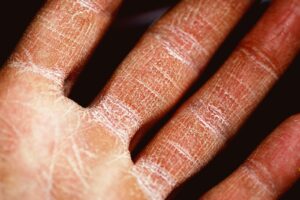A research team has developed a new type of paint that removes pollutants from the air, lasts longer than traditional wall paints and can be created from recycled materials.
The team, from TU Wien in Austria and the Università Politecnica delle Marche in Italy, created special titanium oxide nanoparticles that can be added to ordinary paint.
‘For years, people have been trying to use customized wall paints to clean the air,’ says Prof. Günther Rupprechter from the Institute of Materials Chemistry at TU Wien. ‘Titanium oxide nanoparticles are particularly interesting in this context. They can bind and break down a wide range of pollutants.’
The problem is, that adding ordinary titanium oxide nanoparticles to the paint affects its durability of the paint: just as pollutants are degraded by the nanoparticles, they can also make the paint itself unstable and create cracks, potentially releasing VOCs. After a certain time, the paint layer becomes gray and tinted, finally it has to be renewed.
However, titanium oxide is a photocatalyst, it reacts when exposed to UV light: ‘The UV radiation creates free charge carriers in the particles, which induce decomposition of the trapped pollutants from air into small parts and their release. In this way, the pollutants are rendered harmless, but do not remain permanently attached to the wall paint. The wall colour remains stable in the long term.’
Of course, having to routinely expose a painted surface to intense UV light in order to clean it, is not practical:
‘Our goal was therefore to modify these particles in such a way that the photocatalytic effect can also be induced by ordinary sunlight,’ explains Günther Rupprechter.
They achieved this by adding additional atoms to the titanium oxide nanoparticles, such as phosphorus, nitrogen, and carbon, so that photocatalysis is then also triggered by ordinary visible light.
Qaisar Maqbool, the first author of the study said: ‘We have now investigated this phenomenon in great detail using a variety of different surface and nanoparticle analysis methods. In this way, we were able to show exactly how these particles behave, before and after they were added to the wall paint.’
The team mixed the modified titanium oxide nanoparticles with ordinary, commercially available wall paint and rinsed a painted surface with a solution containing pollutants. Subsequently, 96% of the pollutants could be degraded by natural sunlight. The colour itself does not change – because the pollutants are not only bound, but also broken down with the help of sunlight.
A particularly significant element in modifying the titanium oxide titanium oxide is that it is extremely cheap to do. As Günther explains: ‘In catalysis, for example, precious metals such as platinum or gold are used. In our case, however, elements that are readily available from everywhere are sufficient: To obtain phosphorus, nitrogen and carbon, we have used dried fallen leaves from olive trees, and the titanium for the titanium oxide nanoparticles was obtained from metal waste, which is normally simply thrown away.
Further experiments are being carried out, and commercialisation of the wall paint is intended.

















Leave a Reply